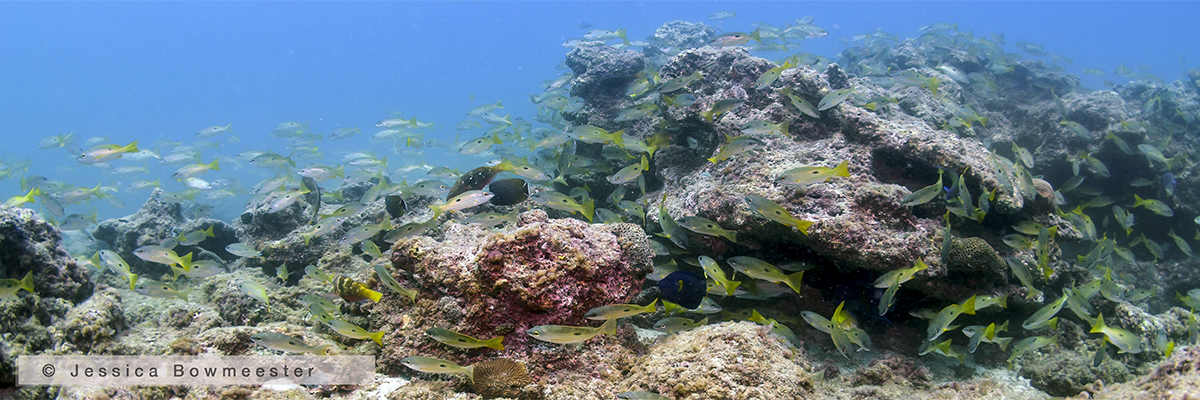
The coral reef is a colorful ecosystem, one of the most productive in the marine environment owing to its ability to act as a refuge, hosting a vibrant community of organisms. Coral reefs may be found near- or off-shore, and they may be created in natural or artificial substrates, like those on oil rigs or on blocks of cement.
While coral reefs may be in general composed of five major zones, it is thought that in the Arabian Gulf including Qatar, corals do not build such a reef framework anymore, due to a combination of anthropogenic and environmental stressors. Instead of reefs, corals form assemblages, the most diverse of which are found off-shore as well as fringing islands, while the majority of corals fringing the coastline have suffered different degrees of mortality and loss of species richness.
Near-shore coral assemblages in shallow depths, experience tidal cycles and intense solar radiance resulting in increased salinity from high temperatures and water evaporation. Most of the corals are cemented, except for some resilient Cyphastrea, Tubinaria and Porites species that may be found in this zone. Dipsastraea with its symbiotic dinoflagellates are also visible, as well as microbial mats, gastropods, crabs and small fishes.
Coral assemblages in off-shore areas or fringing undisturbed islands, may be exposed to intermediate levels of wave energy from storms, and all the areas where light penetration is significant, support the most diverse community of organisms. Representative genera of corals include Acropora, Platygyra, Montipora, Porites, Pavona, Echinopora, Tubastraea, and Goniopora. Other organisms include sponges visited and consumed by Hawksbill Turtles, sea urchins and a multitude of fishes that are consumed by diving Cormorants or other bigger fish.
Coral reefs provide many ecosystem services including reduction of wave energy and height, protection of coasts from erosion. They also serve as nurseries, feeding grounds and refugia to many marine animals that would not be able to take cover and survive in an otherwise bare sea floor. Climate change induced phenomena pose a threat to the health of corals and all the other organisms they support. Coastal development and the creation of artificial channels lead to the loss of shallow corals.
© Chatziefthimiou AD. 2019. Coastal Marine Environment in Qatar: Coral Reefs. Qatar e-Nature.
Sources:
Riegl M et al, 2012
Buchanan JR et al, 2015
Torquato F et al, 2017
Burt et al, 2015
Basson PW et al, 1977







